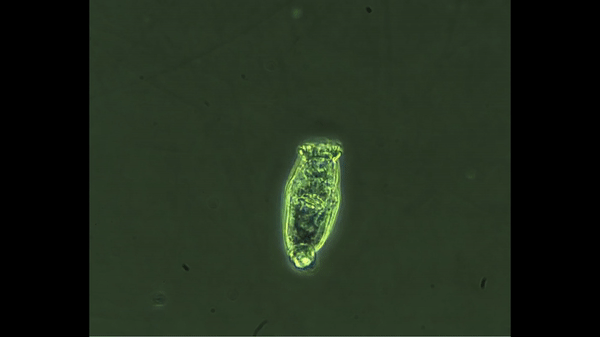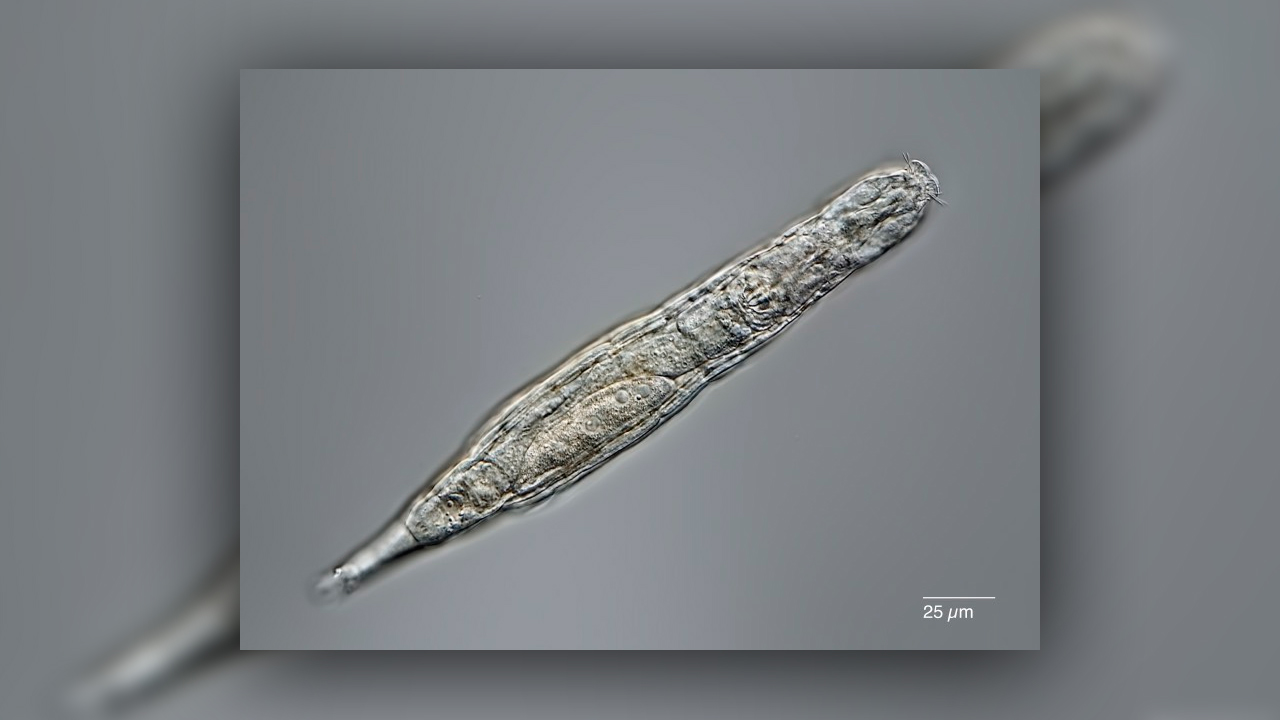24,000-year-old 'zombies' revived and cloned from Arctic permafrost
The cold never bothered them anyway.

Tiny zombies that were frozen in Arctic permafrost for 24,000 years were recently brought back to life and have produced clones in a lab in Russia.
These hardy creatures are bdelloid rotifers, or wheel animals, so-named for the wheel-like ring of tiny hairs that circle their mouths. Rotifers are multicellular microscopic animals that live in freshwater environments, and they've been around for about 50 million years.
In that time, rotifers have picked up a survival trick or two.
Researchers previously found that modern rotifers could be frozen at minus 4 degrees Fahrenheit (minus 20 degrees Celsius) and then revived up to 10 years later. Now, scientists have resuscitated rotifers that froze in ancient Siberian permafrost during the latter part of the Pleistocene epoch (2.6 million to about 11,700 years ago). Once thawed, these ancient rotifers began reproducing asexually through parthenogenesis, creating clones that were their genetic duplicates.
Related: Photos: Ice age mammoth unearthed in Idaho
Permafrost — ground that has been frozen solid for two years or more — can preserve snapshots of life (and death) from millennia ago. For instance, a small bird carcass found in Siberian permafrost in 2020 was 46,000 years old but looked "like it [had] died just a few days ago," Live Science previously reported. A frozen and mummified cave bear, also found in Siberia in 2020 and dating to about 39,000 years ago, still had a fleshy black nose and much of its fur.
Retaining a lifelike appearance after spending thousands of years in ice is impressive. But some types of plants and animals locked in ancient permafrost have managed to do something even more astonishing; return to life from a frozen state.
Get the world’s most fascinating discoveries delivered straight to your inbox.
In 2012, scientists described how they regenerated 30,000-year-old plants from immature fruit tissue that had been frozen in Siberian permafrost, Live Science reported that year. Two years later, researchers regrew Antarctic moss that had been icebound in Antarctica for 1,500 years. Tiny worms called nematodes have also been recovered and revived from ancient permafrost in two Siberian locations: at one site the rocks were around 32,000 years old, and in the other they were approximately 42,000 years old, Live Science reported in 2018.
And now, more frozen animal "zombies" in permafrost have been resuscitated from a suspended metabolic state known as cryptobiosis.

Zombie clones
Rotifers evolved to use cryptobiosis because most of them live in watery habitats that often freeze or dry up, said Stas Malavin, a researcher at the Institute of Physicochemical and Biological Problems in Soil Science in Pushchino, Russia, and lead author of a new study describing the revived rotifers.
"They suspend their metabolism and accumulate certain compounds like chaperone proteins that help them to recover from cryptobiosis when the conditions improve," Malavin told Live Science in an email. Rotifers also have mechanisms for repairing DNA damage and for protecting their cells against harmful molecules called reactive oxygen species, Malavin explained.
For the new study, scientists collected permafrost samples by drilling to depths of 11.5 feet (3.5 meters) below the surface in Siberia's Alazeya River, where radiocarbon dating showed that the soil was around 24,000 years old. When they thawed the samples, the researchers discovered rotifers in the Adineta genus in a cryptobiotic state.
First, the scientists isolated and analyzed the permafrost samples to make sure that they weren't contaminated by modern microorganisms, according to the study. To revive the frozen sleepers, "We put a piece of permafrost into a Petri dish filled with [a] suitable medium and wait until organisms that are alive recover from their dormancy, start moving, and multiply," Malavin said.

Of course, once the defrosted survivors began cloning themselves, the scientists couldn't tell which ones were ancient and which were newborns, as the rotifers were genetically identical. Because rotifers typically only live for about two weeks, the scientists gathered their data from the clones of the 24,000-year-old rotifers, rather than from the Ice Age survivors themselves, Malavin said.
"Organisms isolated alive from permafrost potentially represent the best models for cryobiology research," and could provide valuable clues about the mechanisms that allow those organisms to survive, Malavin said. Those mechanisms could then be tested in cryopreservation experiments with human cells, tissues and organs, he said.
However, it doesn't mean that humans will be capable of duplicating rotifers’ deep-freeze sleep and recovery anytime soon, Malavin added.
"The more complex the organism, the trickier it is to preserve it alive frozen," he said. "For mammals, it's not currently possible."
The findings were published online June 7 in the journal Current Biology.
Originally published on Live Science.

Mindy Weisberger is an editor at Scholastic and a former Live Science channel editor and senior writer. She has reported on general science, covering climate change, paleontology, biology and space. Mindy studied film at Columbia University; prior to Live Science she produced, wrote and directed media for the American Museum of Natural History in New York City. Her videos about dinosaurs, astrophysics, biodiversity and evolution appear in museums and science centers worldwide, earning awards such as the CINE Golden Eagle and the Communicator Award of Excellence. Her writing has also appeared in Scientific American, The Washington Post and How It Works. She is the author of the book "Rise of the Zombie Bugs: The Surprising Science of Parasitic Mind Control," published by Hopkins Press.
